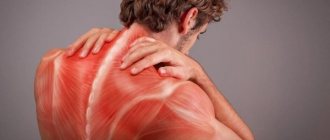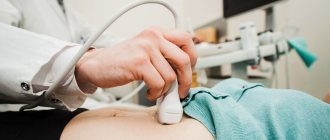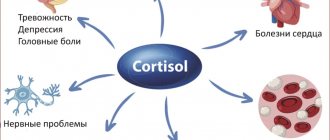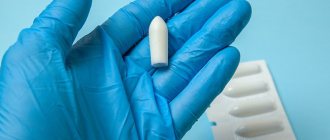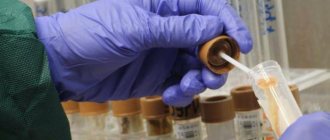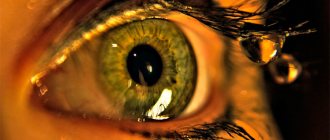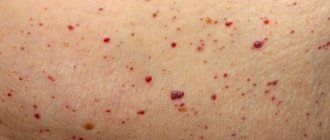There are norms for physiological secretions of the human body. In particular, feces are assessed by consistency, color, smell, and composition. In healthy people, stool has a shaped appearance, a soft consistency, and a brown color ranging from light to dark brown.
If green stool is noticed, it often becomes a frightening factor and forces people to look for pathology. We will look at the causes of green intestinal discharge. To do this, let us first briefly recall what determines and how the color of stool is formed.
Why is my stool usually brown?
Feces are a mixture of dead red blood cells, undigested food, bile, and waste products formed as food passes through the intestinal microflora. Dead red blood cells are black, bile is greenish-yellow, and waste from processing leftover undigested food by intestinal bacteria is brown. Therefore, the brown color of the stool is provided by intestinal bacteria, which also perform a number of other vital functions (for example, facilitating the absorption of nutrients from food entering the body).
Unhealthy stool color:
- Dark stools with mucus may indicate bleeding in the gastrointestinal tract
. The cause may be a burst stomach ulcer or other serious illnesses. - Yellow-green stools usually occur with diarrhea
. Yellow color may be associated with diseases of the liver and biliary tract.
Changes in stool color from dark brown to another shade (black, light or dark green) occur for a number of reasons, including bleeding from the rectum, stomach, or esophagus. Among the causes are diseases of the pancreas and gall bladder. But most often it is caused by diarrhea, in which food passes through the digestive tract faster than usual. Because of this, intestinal bacteria do not have time to give the stool the “correct” color.
When to call a doctor
If the stool turns green, but nothing else bothers the person, there is no reason to panic. However, if additional warning symptoms or even just one occur, you should not hesitate to contact a doctor:
- Changes in the consistency of stool - liquid, foamy stools, the appearance of inclusions of blood, mucus, and undigested food.
- Persistent increase in temperature.
- Weakness, drowsiness, apathy.
- Syncope (fainting).
- Anemia.
- Lack of appetite.
- Sudden loss of body weight.
- Change in skin tone - paleness, blueness.
- Nausea, vomiting.
- Pain in the abdominal or epigastric region.
Is green poop a sign of cancer?
When green stool appears, there is no reason to immediately panic or create catastrophic scenarios. Although abnormally colored stool can be a sign of cancer, most cases involve black, sticky stool. This is due to either bleeding from the stomach, esophagus, duodenum, or impurities of fresh blood (for colorectal cancer).
Although green stool is not usually a symptom of cancer, it should not be underestimated, especially if other symptoms (severe diarrhea, abdominal cramps, vomiting, high fever) appear.
Green coloring of stool 1-2 times in a row without side effects, most often caused by artificial food dyes, consumption of some natural foods, in particular leafy vegetables and berries. A change in the color of feces in combination with periodic diarrhea, constipation, and vomiting may indicate nonspecific intestinal inflammation, such as Crohn's disease, irritable bowel syndrome.
How to find out the reason
If greenish feces appeared once after eating the listed foods or drinks, then there is no reason to worry. You need to pay attention to the color after 1-2 days. Persistent changes due to the use of medications require clarification from the attending physician. Perhaps it is better to stop the individual reaction by abandoning the drug and switching to another analogue.
Severe, persistent symptoms of impaired consistency of stool in combination with a green color require diagnostic measures. First of all, you should visit a doctor and tell about all the signs. If you suspect food poisoning or infection, you need to be prepared to report the food you took the day before and where you were eating.
If you have elevated body temperature, vomiting, or diarrhea, you should call a doctor at home. If liquid black-green stool is released against the background of vomiting with dark contents, gastrointestinal bleeding cannot be ruled out. This is especially likely in patients with peptic ulcers or gastritis. You need to call an ambulance; it is impossible to make an accurate diagnosis on your own.
How to test feces for occult blood?
Depending on the severity of the condition, patients are taken to a hospital, where they are examined while providing the necessary medical care. The set of diagnostic measures includes:
- a blood test with a leukocyte formula; if bleeding is suspected, a test for hematocrit, blood group and Rh factor, and electrolytes is prescribed;
- general urine test and for diastasis;
- biochemical tests for liver pathology;
- feces for scatology;
- tank sowing feces and vomit.
Only a doctor can understand the pathology of elderly people
On the first day, the patient undergoes hardware examinations;
- Ultrasound of the abdominal organs;
- electrocardiogram;
- fluoroscopy of the stomach with barium suspension;
- fibrogastroscopy.
If necessary:
- Colonoscopy is performed under anesthesia;
- computed and magnetic resonance imaging.
The list of studies depends on the symptoms of the disease and the severity of the patient’s condition.
Food
The most common cause of green stool is a change in eating habits and consumption of certain foods. This condition is typical for infants and toddlers when consuming artificial milk (Nutrilon, Milupa, etc.) or other baby food. Until the digestive system is completely accustomed to the new food, their stool may be colored green. The condition returns to normal quickly (within a few days). If this does not happen, an examination is required.
Foods that cause green (usually dark or even black-green) stool include:
- spinach;
- broccoli;
- blueberry;
- cabbage.
Leafy vegetables contain chlorophyll, a green dye that allows plants to produce oxygen. But the human body is not able to digest chlorophyll, so after eating this vegetable, the stool turns green. But it doesn't do any harm. Leafy vegetables are good for health.
In addition to healthy foods, such as the above-mentioned types of vegetables and fruits, changes in the color of stool are also caused by artificial food colors added by manufacturers to certain foods. The human body cannot process them, so it excretes them unchanged.
Allergic reaction
Sometimes green stool is a sign of an allergic reaction to a certain product. In this case, a change in the color of stool is combined with skin rashes, and respiratory rhythm may be disrupted. The product that triggered the allergy may be present in complementary foods or in the mother’s diet if the baby is still receiving breast milk. After removing the irritant from the diet, the child’s condition improves without additional effort.
Back to list Previous article Next article
Bile dyes
Bile is a yellow-green liquid. It is formed in the liver, stored in the gallbladder, from where it flows through the bile duct into the small intestine. Along the way, it connects with the pancreatic duct, through which pancreatic juice enters the small intestine (duodenum). It contains pancreatic lipase, an enzyme that facilitates the absorption of fats. Bile activates pancreatic lipase, increasing its efficiency in digesting fats. As a result, more fat is absorbed from the small intestine into the body.
Bile dyes are a group of biological dyes; the most important is bilirubin. It is supplemented by biliverdin, which results from the breakdown of hemoglobin. Typically, bile decomposes as it passes through the intestines, its color changes to brown, and the remainder is excreted in the feces. But with diarrhea or other digestive disorders, the digestion of bile slows down, it is excreted unchanged, which can cause a change in the color of the stool from green to greenish-yellow.
Causes of green diarrhea
There are many root causes of green diarrhea Infants green stools when they consume only “foremilk” or when feces become oxidized when exposed to air. At the same time, the number of bowel movements does not differ from the norm. In children older than one year, this may be due to nutritional factors or serious illnesses. The causes of the disease may be the following pathologies :
- Dysbacteriosis;
- Allergic reaction;
- Cow's milk protein intolerance - lactose intolerance;
- Food poisoning;
- Infectious or bacterial diseases;
- Intestinal infections: dysentery, rotavirus, salmonellosis, amoebiasis, giardiasis;
- Diseases of the digestive tract;
- Pyelonephritis in young children;
- Nervous system diseases
- Diseases of the endocrine system: Addison's disease, congenital adrenal hyperplasia, thyrotoxicosis;
- Worm infestations;
- Celiac disease;
- Cystic fibrosis;
- Liver diseases;
- Disaccharidase deficiency;
- Eating large amounts of greens, green fruits, green food dyes;
- Taking certain medications.
We can conclude that only a doctor can make a correct diagnosis, and therefore carry out treatment. In case of illness, first aid must be provided, but not self-medication .
Symptoms of diarrhea
The following clinical symptoms exist, depending on the type of diarrhea:
- Enteral diarrhea is caused by inflammation of the mucous membrane of the small intestine. It is characterized by copious discharge up to 4-6 times a day, which may contain pieces of undigested food. Accompanied by pain in the abdomen and around the navel.
- Colitic - appears when there is inflammation of the lower intestines. Manifested by frequent bowel movements up to 10-15 times a day, painful urges. The discharge is small and may contain blood and mucus.
- Gastric diarrhea occurs when the secretion of gastric enzymes is reduced, causing indigestion and rapid emptying of the stomach. The stool increases in frequency up to 4-6 times a day, has a liquid consistency, is dark in color and may contain remnants of undigested food. Sometimes it has a putrid smell. The patient is bothered by a feeling of fullness and dull arching pain in the pancreas.
- Pancreatic - occurs when the secretion of the pancreas decreases. Manifested by a moderate increase in heavy discharge. The stool has a pasty or liquid consistency and contains mucus. Characterized by an unpleasant putrid odor, pain in the upper abdomen, and flatulence.
- Diarrhea in children can present with many symptoms . The main symptom of the disease is repeated green diarrhea, which occurs more than 3 times per day in children over one year old, and more than 10 times in children under one year old. Other manifestations include: nausea, vomiting, belching, flatulence, abdominal pain, blood, mucus and food particles in the stool.
Antibiotics and other drugs
Antibiotics, especially strong drugs used for severe infections, often destroy most of the health-promoting bacteria in the gut. Because bacteria produce brown waste in stool, a deficiency of bacteria results in green or greenish-black stool.
To prevent problems caused by antibiotics, it is recommended to take probiotics (a live culture that supplies the intestines with new bacteria) at the same time as they are taken.
There are other medications and nutritional supplements that cause changes in the color of stool. Among them are the following substances:
- Indomethacin. This drug belongs to the group of NSAIDs. It reduces inflammation and lowers temperature.
- Iron supplements. Basically, the reason for greenish stool is their use in large quantities. Sometimes constipation may also occur. After stopping the drug, the condition quickly normalizes.
- A number of hormonal contraceptives (in particular, those containing medroxyprogesterone).
Medical procedures such as bone marrow transplants can cause green stool. When the body rejects the transplanted bone marrow, severe gastrointestinal irritation, diarrhea, and green stools occur.
IMODIUM® Express in the fight against diarrhea
IMODIUM® Express is a drug that is approved for use in the symptomatic treatment of acute and chronic diarrhea of various origins. The active substance, loperamide, has the following effects:
- helps restore intestinal motor function - slows down the movement of feces and reduces the frequency of the urge to defecate;
- helps reduce the volume of water released into the intestinal lumen;
- helps regulate and restore the normal level of absorption of water and salts dissolved in it by the intestinal walls.
Before taking IMODIUM® Express, you should read the instructions and consult a specialist.
Gastrointestinal diseases
Some types of parasites, viruses, and bacteria can also cause changes in the color of feces. Most often these are intestinal lamblia (giardia lamblia), noroviruses. The presence of these microorganisms is accompanied by diarrhea with green stools. Sometimes this symptom also occurs with common traveler's diarrhea. As a rule, the condition returns to normal within a few days without the need for treatment. Greens in feces appear in Crohn's disease, ulcerative colitis, and other diseases of the digestive system accompanied by diarrhea (including hereditary disorders). Green stool in an adult can occur with irritable bowel syndrome, excessive use of laxatives (medicines that facilitate bowel movements).
An anal fissure is a tiny crack in the tissue around the anus, often caused by chronic constipation, the passage of hard stool. But sometimes this manifestation occurs with chronic diarrhea, nonspecific intestinal inflammation. Anal fissures can bleed, which causes the presence of blood in the stool and its coloration in a red-green hue.
How to treat
If it’s just a matter of nutrition, it’s enough to follow a therapeutic diet for some time. In case of food poisoning, you should rinse your stomach by drinking as much warm salt water as possible. To quickly remove toxins from the body, you need to drink activated carbon, and then take Regidron to restore the digestive functions of the gastrointestinal tract.
To avoid losing too much water during vomiting and diarrhea, you need to maintain fluid balance. To do this, regularly drink water with a small amount of salt and sugar (1 teaspoon of both is enough).
If we are talking about infection and inflammatory diseases, self-medication is contraindicated. For internal bleeding and intestinal colitis, treatment is possible only through surgery. Patients with salmonellosis are treated under observation in the infectious diseases department. Patients in serious condition are in the intensive care unit.
ethnoscience
Before treatment with folk remedies, it is advisable to first consult a doctor. Medicinal herbs that are popularly used in folk medicine have their own side effects. In addition, many plants are allergenic, which is also worth considering before choosing a folk recipe. What can you drink if you have diarrhea:
- Strong black tea. It contains tannins, which have a binding property.
- Lemon. For prevention purposes, you can drink a glass of lemon water every morning before meals. If you already have diarrhea, you should add a spoonful of honey to the lemon. This remedy will help to quickly cleanse the stomach and remove harmful substances.
- Sunflower seeds. Ordinary seeds can become an effective remedy for diarrhea; to do this, they must first be fried and then filled with water 2 to 1. The mixture is kept on fire until half of the liquid has evaporated. Adults drink half a glass of the broth, children drink a tablespoon. Sunflower seeds can be replaced with pumpkin seeds; they are good for digestion.
- Rice. This product has strengthening properties, so if you have diarrhea, it is enough to eat rice porridge with water.
- Walnuts. Tincture of walnut partitions is useful for stool disorders. To do this, 300 g of partitions must be completely filled with alcohol of 70% strength. The mixture is placed in a dark place for a week, and then taken three times a day, 7 drops before meals.
- Potato starch. The astringent properties of this product will help cope with diarrhea and normalize the color and structure of stool. The starch can be eaten dry or used to make berry jelly. The simplest option is a starch solution (1 tablespoon per 100 ml of water).
It is not recommended to use folk remedies as a replacement for drug therapy if green stools are caused by a specific disease.
Diet
In order for green-brown poop to return to normal, you should exclude cereals, beef, beans, green vegetables and fruits, herbal teas, and herbs from your diet for 3-5 days. It is also worth removing:
- alcohol;
- White bread;
- sweet;
- herbs and spices;
- fried, salted and smoked.
During treatment, it is best to eat soups with vegetable broth, lean meats and steamed poultry, and cereals. You should also drink plenty of clean water to restore fluid balance and prevent dehydration.
Nutrient malabsorption
This is a disorder associated with gastrointestinal diseases. Most nutrients are absorbed in the mucosa of the small intestine. This requires digestive enzymes from the pancreas and bile. Failure of any of these components results in a deficiency in the body's supply of nutrients.
| Disease | Characteristic |
| Celiac disease | An autoimmune disorder characterized by a cross-reaction of the body's antibodies against gluten |
| Lactose intolerance | A condition caused by a congenital or acquired deficiency of lactase, the enzyme that breaks down lactose |
| Short bowel syndrome | A condition in which the absorption area of the small intestine through which nutrients are absorbed is reduced. |
| Blind loop syndrome | A condition in which bacteria enter the small intestine, disrupting metabolism and the normal functioning of bile |
| Irradiation of the small intestine | A disorder that occurs when malignant neoplasms in the abdominal cavity are irradiated |
| Intestinal amyloidosis | A systemic disorder in which the compound amyloid accumulates in an organ |
Treatment involves a combination of cause-and-effect solutions. The patient’s diet is adjusted, missing nutrients, minerals, and vitamins are introduced. If necessary, drug treatment is prescribed.
Diagnosis of the problem
Green feces in an adult (it is important to identify the causes of its occurrence immediately in the detection field) may be a consequence of gastroenterological problems.
To determine the correct diagnosis, the specialist uses the results of a number of studies:
- general blood and urine tests, determination of their composition and percentage of substances in these liquids;
- Ultrasound to check the condition of the abdominal organs;
- analysis of fecal matter for the content of organic acids;
- detailed stool analysis - biochemical studies, microbiology are performed, the number of bacteria containing in a certain portion of the test substance is determined;
- probing the small intestine for the presence of anaerobic bacteria, which are not found in feces;
- test for the concentration of hydrogen in exhaled air - a high level will indicate a large number of bacteria in the small intestine;
- endoscopy – is carried out to determine the condition of the mucous membrane; mucosal material can be collected for histological examination. In this way, the possibility of cancer is excluded or confirmed.
FGDS is recommended for signs of gastroduodenal pathology. For patients with suspected inflammatory bowel disease, colonoscopy with biopsy sampling is indicated. To make a diagnosis of celiac disease, a cytomorphological examination of small intestinal biopsies is performed and specific antibodies are determined. To find out the cause of severe allergies, an immunogram is informative.
Salmonellosis
This is an intestinal infectious disease, usually not fatal, but unpleasant. It is risky for both children and adults. Its causative agent is the bacterium Salmonella enteritidis. This pathogen belongs to the group of Salmonella, which causes a number of other diseases (in particular, typhoid fever). The bacterium is often found in milk, eggs (and all products containing eggs, especially egg mayonnaise).
Sufficient heat treatment of any of the risky products destroys salmonella.
When food containing Salmonella bacteria is consumed, pathogens enter the intestines, attack the cells of the intestinal wall, and inflammation occurs. The infection manifests itself as fever, diarrhea with loose, watery stools. It is usually green in color and may contain mucus and blood. Abdominal pain, nausea, and vomiting may occur. In people with weakened immune systems (eg, people with AIDS), salmonella can enter the bloodstream and spread throughout the body. In this case, serious blood poisoning (sepsis) occurs, which can be fatal. The main prevention of the disease is to avoid eating foods (especially dairy and eggs) from unknown sources, especially in the absence of proper heat treatment of food.
Treatment measures at home
Treatment of diseases is carried out in the infectious diseases department or gastroenterology, depending on the diagnostic results. If salmonellosis is suspected, pre-medical care includes:
- plenty of drinking regimen, even when vomiting you should give boiled warm water to drink in small portions, the best drug is Regidron;
- taking sorbents - drugs that attract toxins in the intestines and remove them with feces; activated carbon (every 2 hours an adult should drink 4 tablets), Smecta, Polysorb are suitable.
Do not rinse the stomach, give antibiotics or drugs that stop intestinal motility. Toxic substances should be removed with diarrhea. If bleeding is suspected, the patient should be placed on his side, prohibited from getting up, a heating pad with ice or cold water should be placed on his stomach (something from the freezer, wrapped in cellophane and a towel will do), you can allow him to swallow small pieces of ice.
When to seek medical help?
You should consult a doctor if symptoms, in particular diarrhea, persist for more than 3 days. Prolonged diarrhea can lead to dehydration and malabsorption. A visit to a specialist is also required if green stool is accompanied by other symptoms, such as abdominal cramps, blood in the stool, and nausea.
It is often uncomfortable for a person to talk to a doctor about stool and its external characteristics, but it is necessary. The doctor is called to help improve the condition. Before visiting, it is advisable to make a list of medications you are taking. It is also important to inform your doctor about your eating habits (if there are no changes, about recently consumed foods) and the presence of other diseases. This is the only way to make a correct diagnosis, determine the cause of green stool, and apply the correct treatment.
With a one-time symptom, as a rule, we are not talking about a serious problem. It is most likely caused by eating leafy vegetables. If the green tint of stool persists for more than 3 days in a row, accompanied by other signs mentioned above, a disorder may occur that requires a specialized therapeutic approach.
You should quickly consult a doctor if there is bright red blood in the stool, or if it turns black (this may be a sign of melena - the presence of digested blood in the stool). But sometimes blueberries and licorice consumed the day before can cause it to turn black.
Therapeutic measures
First of all, it is necessary to clarify why green stool appeared. Diagnosis is usually carried out by a gastroenterologist. If the reason lies in the diet, then the treatment is quite simple - normalize your diet and exclude raisins, gooseberries, cucumbers, kiwi, and drinks with dyes. The following medications may also be prescribed:
- Smecta;
- Regidron.
If all of the above measures do not bring the desired result, this means that the person is progressing to some kind of disease. The main method of therapy in this case is medication. The patient may be prescribed the following medications:
- antibacterial;
- antispasmodics;
- anti-inflammatory;
- probiotics;
- vitamin complexes.
Treatment of causes of changes in stool color
If a person has an allergy, intolerance, or sensitivity to certain foods that cause chronic diarrhea, the risky food should be eliminated from the diet or its consumption reduced. This is mainly caffeine, dairy, fatty products, carbonated drinks. Keep a diary and write down which foods cause problems.
Treatment of a patient with infectious diseases is carried out by doctors from the infectious diseases department.
In case of infection, bed rest and increased fluid intake are usually prescribed (to prevent dehydration). It is advisable to use drugs that cleanse the intestines (for example, drugs containing dichloroquinoline). In severe cases, antibiotics are also prescribed.
In most cases, green stool is a condition that does not require concern. Long-term persistence of the problem may indicate the presence of a serious illness, but a one-time case may indicate the presence of natural dyes (from spinach, broccoli) in the stool.
Treatment for green stool caused by salmonella
Treatment of salmonella depends on the clinical form of the disease and the patient’s immune status. Therapy is symptomatic. The most important thing is to replenish fluids and minerals.
Treatment consists of:
- rehydration (oral and parenteral);
- diets;
- drug therapy;
- Antibiotics (penicillin, cotrimoxazole, quinolones).
In all acute diarrheal illnesses, rehydration is critical. It should take into account the basic daily fluid requirement, stool volume, vomiting, and temperature.
For salmonellosis, it is important to exclude all fatty, irritating foods, milk, meat, including diet ham, chocolate, leafy vegetables, fresh fruits (except bananas, grated apples). The diet includes mashed potatoes, rice, root vegetable soup, dry bread. Gradually, as the condition improves, pasta, lean meat, and fruits are added.
Medicines used include intestinal disinfectants and adsorbents. Drugs that slow down intestinal motility are not suitable for salmonellosis, because they enhance the absorption of toxic bacterial products.
Treatment of green stool caused by malabsorption
Symptoms should disappear once the offending foods are eliminated. If you are lactose intolerant, avoid milk and some dairy products. You can try lactase tablets, lactase-containing milk, or milk without milk sugar.
If you have celiac disease, you must follow a gluten-free diet that excludes products from wheat, rice, oats, and other grains. Gluten is also found in a number of processed foods, so it's a good idea to carefully research what ingredients are in each product.
Patients with malabsorption are prescribed high doses of vitamins and minerals. In case of lactose intolerance, calcium intake is increased (the daily dose of the supplement is 500 mg 2-3 times a day). Tablets containing live Lactobacillus bacteria may reduce flatulence, diarrhea and other symptoms associated with taking antibiotics, such as green stool. Lactobasillus acidophilus restores the natural intestinal microflora disturbed by drug therapy and diarrhea.
Treatment of green stool caused by parasitic infections
Parasites sometimes disappear on their own. But specialized treatment is always advisable, especially if symptoms are long-lasting.
Each disease has a specific treatment. Sometimes it is necessary to use antibiotics, sometimes corticoids, drugs that act directly against parasites. The choice of method always depends on the severity of the condition.
In most cases, the body copes with viral diseases on its own. Regular replenishment of fluids and proper nutrition are sufficient. The body needs to replenish missing minerals lost during diarrhea and vomiting. During treatment, auxiliary drugs in the form of probiotics and minerals can be used to support the exhausted body and stabilize the intestinal microflora.
Mild forms of bacterial infections are treated with sufficient fluids and a strict diet. Activated carbon and other anti-diarrhea medications are used. Imodium and Hilak forte are prescribed. For localized inflammation, antibiotics are used. In severe cases, hospitalization is required.
Treatment for green stool caused by anal fissure
An anal fissure either heals on its own or usually becomes chronic after 3 days. Treatment can be conservative or surgical. Conservative therapy includes sitz baths (in a decoction of chamomile, oak bark), laxatives, suppositories with a substance that affects the tension of the anal sphincter (antispasmodics), and analgesics.
The goal of surgical treatment is to heal the crack itself in the wall of the rectum and influence the tension of the anal sphincters. Dilatation (enlargement) of the rectum is performed under local or short general anesthesia. The expansion provides blood circulation to the torn edges of the crack, improving healing.
The crack is also removed (excision). This is a less effective method and does not affect sphincter tension. The first choice method is the Eisenhammer operation or internal lateral partial sphincterotomy (intersection of 1/3 of the height of the internal sphincter). This is a delicate surgical procedure that can lead to fecal incontinence and should be performed by an experienced proctologist.
Causes during pregnancy
Digestion in a pregnant woman is no different from the physiological processes of a healthy person. It is possible that sensitivity to certain foods increases due to a change in taste. Therefore, the basis for green stool during pregnancy should be sought in nutrition. Pregnant women enjoy eating: broccoli, dill, spinach, parsley. An increase in the rate of transit of such plant products through the intestines has an effect.
Some vitamin supplements containing iron also affect stool color. They are prescribed by obstetricians quite often to prevent anemia. Managing pregnancy in women with chronic diseases requires the attention of a doctor and relatives. It is impossible to predict an exacerbation in advance. Therefore, it is necessary to come early for examination if you have suspicious bowel movements.
The ban on spicy foods and pickles increases the need for fresh greens
Risks of changes in stool color
Removing waste is one of the main, most important functions of the human body. The appearance and smell of the stool itself indicates the state of health and warns of a serious illness. Therefore, paying attention to its changes is advisable.
Greenish stool with mucus is most often caused by nonspecific inflammation of the intestinal mucosa. The condition itself is not dangerous; the problem arises when it occurs simultaneously with rectal bleeding, because Irritable bowel syndrome may occur.
Hard, heavy stools are a common consequence of insufficient fluid and fiber intake. Such stools may be dark in color, mainly due to prolonged residence in the colon.
Constipation and diarrhea indicate an intestinal imbalance that can weaken the immune system. Prolonged diarrhea may indicate serious intestinal illness; there is a risk of dehydration. Long-term constipation can cause eczema, hemorrhoids, and psychological discomfort.
Green stool - what to do
The coloring of feces in an unusual color should alert you. But this is no reason to panic. Perhaps the reason was menu errors. Remember your diet in the previous two to three days. If the discharge is of normal consistency and you are feeling well, there will be no need to worry. After a couple of days, the intestines will restore the normal brown color of the feces.
If the cause of the color change is food poisoning, but the person feels quite healthy, it is recommended to buy over-the-counter medications at the pharmacy: activated carbon, Enterosgel. They are taken after cleansing the stomach with two to three liters of water, according to the instructions.
Activated carbon
Enterosgel
In the future, Regidron is indicated to suppress the gag reflex, normalize water-salt metabolism and restore intestinal function . To restore the microflora, you will need probiotics (Lactobacterin, Colibacterin, Bifikol or other drugs).
Regidron Lactobacterin
Colibacterin Bificol
A gentle diet will help restore the body. Fatty foods (animal oil, lard), sausages, smoked foods, soda, bread, pastries, herbs, foods colored with pigments, and milk are removed from the diet.
The menu during the recovery period includes pureed vegetable soups, mashed potatoes and porridge cooked in water, jelly, herbal tea and compotes, yogurt, kefir. You can eat low-fat protein foods - lean fish, meat (pay attention to the amount of kcal).

